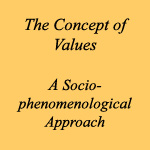| COMPLEX | APPROACH |
| Books: Monographs
|
Introduction THE COMPLEX APPROACH Complex means intertwined – from the Latin com (with) and plectere (intertwine). System means put together – from the Greek syn (together) and histanai (to place). When intertwined phenomena are dissected and systematically put next to each other for observation and analysis, they lose the characteristic dynamics of their intertwined relationship. Systems approach, which has dominated our scientific education for decades, has made us all overly “systematic,” handicapping us to conceive inextricable complex phenomena and their flux. The premise of the complex approach is that the whole is different from the sum of its parts. Complex is different from the sum of simples and systems it contains and in its flux verges on chaos. The aspiration of a researcher applying the complex approach would be to figure out the flux, i.e. , the dynamics and fermentations of the complex in motion. But the observation of the flux is subject to Heisenberg’s uncertainty principle. The complex approach, as distinct from systems approach, however, hinges on the consciousness of the flux. Systems can be formulated. Their characteristics can be computed and quantified. Complexes can be understood but not formulated. The understanding of the complex cannot be reduced to computational and digital analyses. A complex may contain a number of systems. Where the relationship of systems can be formulated we end up with another level of systematic observation. Some, like the Santa Fe Institute scientists studying “complex systems,” assume to be dealing with “complexity.” “Complex systems,” as a whole, are not necessarily complex but only a different systematic level. By attributing it to the complex systems the Santa Fe Institute has, in fact, muddled the usage of the term “complexity”. Because scientific endeavor has been ever more fragmented into specialties, we tend to reduce what we encounter in the complex and the flux to systems which we can grasp, compute and replicate. In the process, we often loose sight of the complexes out of which systems are extracted. The process is particularly handicapping in social sciences and can reduce scientific inquiry to meaningless games. With all our statistics and intelligence reports, we did not anticipate the explosion of Islamic fundamentalism or the implosion of the now-defunct Soviet Union. And even though we are observing their fermentations and dynamics today, we cannot construct a formula by which we could tell exactly how they would evolve in the future. In terms of phenomenology of knowledge, complex can be conceived within an integrated whole of simple, system, complex, flux and chaos. They cannot be presented as a sequential continuum because they are within each other. They cannot be represented in concentric circles because they are intertwined. Simple is within chaos and chaos is within simple. As atoms are split into simpler elements, electrons, positrons, neutrons, quarks, gluons, charm and flavors, we plunge into chaos – the part we do not know and cannot figure out. Presenting the whole as a "Klein bottle" will not do either. Because leaving chaos and traveling through the bottle we do not always find simple on the other side. Besides, the Klein bottle is a bad metaphor. It suggests a static platform. The bottle itself is in flux. In short, the whole cannot be conceived in a three dimensional illustration. The contemporary scientific approach to chaos deals with, simply put, the Butterfly Effect – “the notion that a butterfly stirring the air today in Beijing can transform storm systems next month in New York” [ James Gleick, Chaos: Making a New Science, New York, Penguin Books, 1987] This vision of chaos puts the edge of chaos somewhere within the complex and the flux. It recognizes the difficulty of observing and tracing metastable states – the circumstances and conjunctures generated at each instant of the stirring of the air by the butterfly, the flapping of their wings by other butterflies and the eagles in Alaska, the waves in the ocean and the change in their temperature caused by the rays of the sun and the change of their flow caused by the propellers of the fishing boats.... If we want to soften the edge of chaos and use the complex approach to meander into it, we need to keep the Pandora's box open and conceive chaos beyond the Butterfly Effect. Each specialist digging "systematically" into a particular field does so within the complex and flux of the total environment. Within the whole, we can conceive of the complex in the context of “total environment.” Total environment is the rather clumsy translation of the German word Umwelt used by Üxkull in 1921. To illustrate Umwelt he cited the case of the tick which upon smelling its prey lets go of the branch to fall on its prey. A more recent study of the complex within the total environment is Tumlinson et al's article in Scientific American , March 1993, on how parasitic wasps find their hosts. The wasp is guided to its prey, the caterpillar, which will serve as the depository of the wasp's eggs, by a complex of odors including those emitted by the leaves being chewed by the caterpillar. Some, reflecting on Tumlinson’s research have wondered whether the plant, by emitting the odor attracting the wasp, was not crying for help. That, of course, implies a lot of insight on the part of the plant about the egg laying habits of the wasp. What do we know? The fortune-teller asks precise dates and hours of birth in order to tell the future on the basis of the position of the stars. It is true that different positions of the moon and the sun produce tides and have effects on the growth of the plants and women’s menstruation. So, it is plausible to think that stars may affect our lives. But it is doubtful that the fortune-teller can tell what the effects are. Maybe someday astronomers, astro-physicists, particle physicists, biologists, sociologists and psychologists will put their heads together and tell us about the influence of stars on our lives. Most phenomena are complex. By taking a part of the complex apart and isolating it from circumstances and conjunctures of its flux, we may be able to turn it into a manageable system. The system created, however, can affect the circumstances and conjunctures affecting the rest of the complex. For example, the systematic cutting of trees in the forest can create erosion, flooding, drought, and loss of habitat for other species in a complex environment. To the extent those aftereffects can be formulated and computed we remain in the domain of “complex systems.” In that sense, Mandelbrot’s fractals are not complex. The progression in Z = Z 2 + C is computable. All factors that are statistically computable are part of the systems area of knowledge. The complex begins where the researcher, observer, thinker, is not privy to the outcome of the interactions of the phenomena. Not that they are chaotic, but that their interaction and intertwining can produce outcomes which are not systematically predictable. At present, human behavior is complex. The firing of the synapses can be studied. But whether a person will look left and right crossing the street is not a certainty. In analyzing a person’s behavior we do not know whether it is the result of simple, systematic, complex, flux or even chaotic processes within the individual. The person may have not looked left and right because he was crossing a rural road where there is usually no traffic – in a way, because he was sure no traffic was coming from either side, simple and systematic – or he may not have looked left and right because he was distracted about his complex love life, or his thoughts were muddled by a myriad of financial, affectional and health problems – a chaotic state of mind. There is a whole spectrum of possibilities between assurance and preoccupation. Within the complex of a living body we can distinguish "systems" such as "the respiratory system", " the circulatory system", or "the skeletal system." These, of course, are not autonomous systems. The red cells of the circulatory system are generated in the bone marrow of the skeleton; they get their oxygen within the respiratory system which is supplied by the circulatory system. So, each system is involved with other systems within the complex. Simple, system, complex, flux, chaos are relative terms and depend on our perception and conception within the environmental context. Ask a skilled plumber to fix a leaking drainpipe. Its simple. Not for everybody. Simple is a state of mind. It permits us to understand the skilled plumber’s attitude towards the leaking drainpipe. Yet, we could argue that nothing is really simple. 1+1=2, that is simple. But then, which 1? A meter on the tape is one meter. In 1790 it was established as 1/40,000,000 th of the circumference of the earth at equator and later cut into a standard platinum rod. But since 1960 it is no longer so. It is 1,650,763.73 times the wavelength of the orange light emitted by the pure krypton (Kn, atomic weight 36) isotope gas of 86 mass number, excited by an electronic discharge; or, since 1983, the distance traveled by light in a vacuum in 1/299,792,458 th of a second – which is slightly less than the conventional meter. We devise systems to define the simple. By dissecting the complex into systems and simples, we manage to have an inkling of its nature. There may be areas within the complex which we may not understand. That does not necessarily imply that we assume that chaos reigns within those unknown areas. We assume that there is order within them and attempt to understand even though we may not be able to compute and formulate it. That assumption may be applied to the universe which the scientific mind ever seeks to observe and understand. To assume that the universe is imbued with order beyond the observable, and man's capacity to scientifically understand, would be a religious approach (in the sense of God's order.) For the scientific and philosophical mind chaos may mean that which may have an order, whose order we are unable to discern and therefore, in our mind, seems chaotic, or that which may intrinsically have no order. We wouldn't be able to distinguish one from the other if we did not continue our inquiry to find out. This site presents social studies inspired by the complex approach. For the application of the complex approach to other fields of inquiry see Links . Copyright © 2003 Anoush Khoshkish |
|||||








